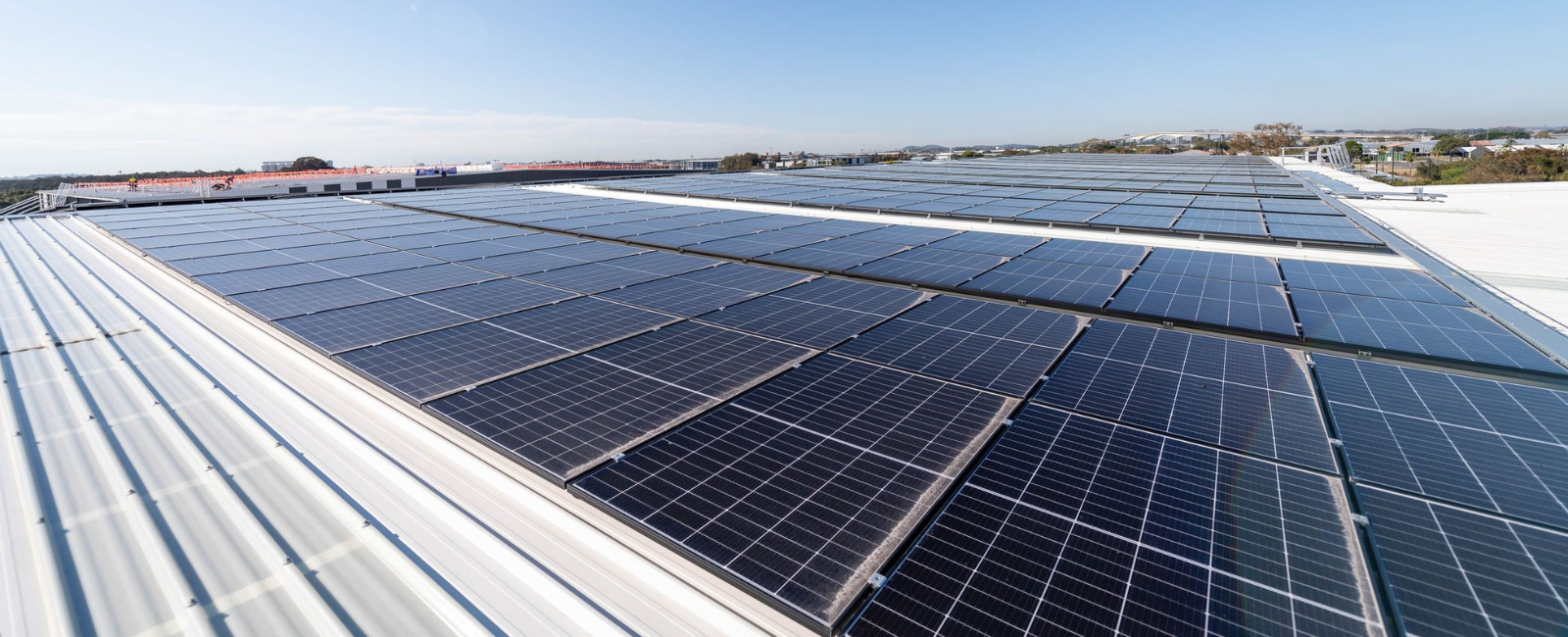
Brisbane Airport has been steadily expanding its rooftop solar network since 2018, and is now home to the largest airport solar installation in an Australian airport and the largest commercial rooftop system in the southern hemisphere.
The latest addition at the International Terminal has added almost 5,000 new panels across the Terminal’s northern and southern concourses and its multi-level car park. Once fully commissioned, the new infrastructure will generate approximately 3.2 GWh per year, covering around 7% of the airport’s total energy needs.
Brisbane Airport Senior Project Manager Andrew Lawrence has overseen the rollout and says it has been a complex but rewarding project to deliver. Working within an operational airport environment meant the project required detailed planning and coordination from start to finish.
“The airport is a secure and operational site, so we didn’t always get our first choice when it came to timing or access,” Andrew said. “Connecting the new solar systems to our existing infrastructure meant temporarily shutting down power to parts of the Terminal. That required careful coordination with Australian Border Force, the Australian Federal Police, commercial tenants and multiple internal teams to make sure everything from flights to emergency systems could continue running safely. It was a real balancing act.”
Andrew’s role involved managing the interface between Brisbane Airport and the contractors, ensuring the project plan was delivered to specification, within a constrained environment.

With the installation now complete, the project is transitioning to Brisbane Airport’s Facilities team for ongoing operation and maintenance. Energy Manager Simon Elliott and Utilities Engineer Grant Codinera oversee the embedded high-voltage network, airfield lighting systems and utility infrastructure across the precinct. Together, they manage the airport’s solar operations, from final inspection to long-term performance monitoring.
Once the infrastructure passes all compliance checks, it is registered with the Clean Energy Regulator, enabling the creation of Large-Scale Generation Certificates. It is then energised and integrated into the broader network.
Performance is tracked using Meteocontrol’s VCOM platform, which compares real-time output to expected generation levels to track efficiency and downtime.
“If we notice a drop in performance outside the expected range, we can investigate whether the panels need cleaning or repair,” Simon said. “The platform gives us visibility across the system and helps us stay ahead of any issues.”
Simon explained that Brisbane Airport’s energy strategy is not limited to solar generation. Work is underway to install battery energy storage systems, starting with a proof-of-concept battery that will allow the airport to store solar energy and use it when demand is highest.
“Right now, we can only use solar while the sun is shining. But with battery storage, we’ll be able to store energy during the day and use it later, which will help us get the most value from the systems we’ve already invested in,” Simon said.
He and Grant both say they’re proud to be part of a long-term shift in how energy is generated and used across large infrastructure sites like airports.
“What excites me is that we’re participating in a global movement of going renewable,” Grant said.
“We can be proud of being part of that team are contributing towards Brisbane Airport’s sustainability commitment within our electricity space.”
This project is expected to be fully commissioned and generating power for the existing network by the end of June 2025. While the panels might not be visible to most passengers, those looking out from Level 4 of the International Terminal or looking out the plane window of a taxiing aircraft might just catch a glimpse.

Airport-wide solar network fast facts
- The Brisbane Airport precinct is currently home to 33,000+ solar panels.
- There are 18 solar sites across the Brisbane Airport precinct, with four more sites in the pipeline.
- The first solar infrastructure installed was at Brisbane Airport Corporation headquarters in January 2012, with 256 solar panels generating 60 kW of power, producing approximately 0.067 GWh per year.
- By the end of 2027, Brisbane Airport's total solar infrastructure is expected to generate 19.65 GWh of energy per year.
- For the previous 12 months, the International Terminal consumed 30.86 GWh, with 2.59 GWh or 8.3% supplied from solar. With the increase in solar infrastructure at the International Terminal this supply is expected to supply approximately 12% of the site’s energy.

